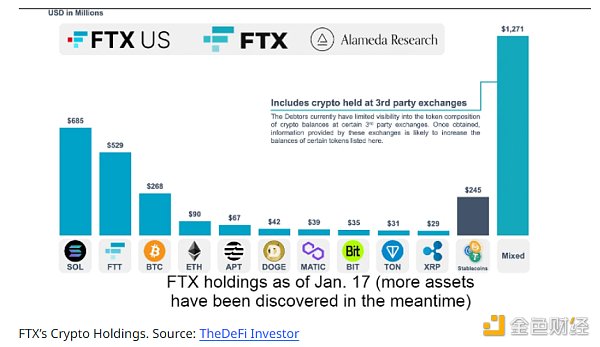Dialogue with Scroll Scroll Mainnet Goes Live, Firm Commitment to Long-term Development of zk-EVM
Conversations with Scroll Scroll Mainnet Launch, Strong Dedication to Continuous Development of zk-EVMScroll‘s launch of ZK-EVM is an important milestone in the Ethereum ecosystem, providing a highly compatible, efficient, and long-term second-layer scaling solution for the Ethereum ecosystem.
Original Source: Bankless (Youtube)
Scroll has just launched zkEVM on the Ethereum mainnet!
In the latest episode of the Bankless podcast, hosts David and Ryan discuss the latest release of Scroll’s ZK-EVM with co-founder Sandy Peng and senior researcher Toghrul Toghrul Maharramov.
- LBRY’s Final Farewell: A Blockchain Tragedy
- Explosive Testimony from the FBI, Kendall Jenner, and Mind-Blowing Twitter Messages Unraveling the Drama of the Second Week in the SBF Trial
- Uniswap Dominates the Decentralized Exchange Scene in 2023 as Trading Volume Skyrockets to Record-Breaking Levels

Hosts: Sandy Peng, Co-founder of Scroll; Toghrul Toghrul Maharramov, Senior researcher at Scroll
Speakers: David & Ryan, Bankless
Category: Bankless podcast
Original Title: “Scroll zkEVM LIVE on Ethereum”
Episode: Link
Airing Date: October 18, 2023
From Concept to Mainnet: The Long-term Building of Scroll
-
A notable feature of the Scroll mainnet is its high compatibility with Ethereum. Scroll enhances Ethereum’s functionality through ZK technology, providing greater security and privacy protection.
-
Toghrul emphasizes that Scroll’s ZK-EVM has evolved from a bold idea to a mainnet solution. This process has been long and difficult, as it was considered a crazy idea at the time (about three years ago). Building a ZK-EVM equivalent to the EVM was thought to be an unreachable goal, but now that goal has been achieved.
-
Scroll’s ZK-EVM launch is an important milestone in the Ethereum ecosystem, providing a highly compatible, efficient, and long-term second-layer scaling solution. EVM equivalence ensures seamless integration into the existing Ethereum ecosystem, facilitating convenience for development and adoption.
-
The Scroll team considers ZK-EVM as a long-term solution, while Optimistic Rollup is seen more as a temporary or short-term technical solution. Toghrul expects that over time, people will gradually transition from Optimistic Rollup to ZK Rollup, which may offer more advantages in certain aspects such as security and efficiency.
-
Another unique aspect of Scroll is its developer and user friendliness. EVM equivalence allows Scroll to leverage the existing rich resources of Ethereum, including documentation, tutorials, and open-source code, promoting faster and more efficient development and innovation without starting from scratch or re-educating and teaching people new programming languages or paradigms.
-
Scroll’s ZK-EVM provides developers with a platform that is easy to migrate to and develop on by maintaining a high level of compatibility with Ethereum. They reuse a significant amount of Ethereum’s code and tools to ensure compatibility of applications and infrastructure, making the transition from Ethereum to Scroll seamless, simple, and secure.
-
The launch of the Scroll mainnet marks a new beginning and will bring more substantial feedback and improvement opportunities. Sandy expresses that the team has put in tremendous effort for this significant milestone. At the same time, the Scroll team also looks forward to receiving feedback from the community and developers to iterate and improve ZK-EVM.
A Revisit to ZK vs OptimisticAdvantages of ZK Rollup
-
Faster transaction confirmation time: ZK Rollup uses zero-knowledge proofs to verify transactions, and once the proofs are computed and verified, the transactions are immediately confirmed, eliminating the need to wait for potential fraud proofs and greatly speeding up transaction processing.
-
Faster finality: ZK Rollup can achieve finality within minutes, as it does not rely on challenge windows to validate the validity of transactions. This is beneficial for applications and users that require quick transaction confirmation.
-
Lower fees: Due to the efficiency of ZK Rollup, transaction fees may be lower, which is beneficial for both market makers and end users.
-
Faster cross-chain interactions: ZK Rollup allows faster cross-chain messaging and interactions, particularly from L2 to L1.
Limitations of Optimistic Rollup
-
Challenge windows: Optimistic Rollup requires a challenge window that allows others to prove that transactions are invalid, which typically takes several days.
-
Exit delays: ZK Rollup allows for faster exits, typically completed within 30 minutes, whereas Optimistic Rollup may take up to a week.
User Experience
-
ZK Rollup: For most users, unless they attempt to exit from L2 to L1, they may not feel the difference between ZK Rollup and Optimistic Rollup. However, as the scale and throughput of the second layer increases, the advantages of ZK Rollup will become more apparent.
-
Optimistic Rollup: Although Optimistic Rollup also offers L2 scalability, its challenge windows and slower exit times may impact the user experience.
Potential and Applications of ZK
-
Efficiency and Performance: ZK proofs allow for faster and more efficient transaction verification and processing. Through ZK, transactions can be verified for correctness without revealing any sensitive information, greatly improving the efficiency and performance of the entire network.
-
Privacy: ZK proofs provide enhanced privacy protection. Users can prove ownership of certain information or satisfy certain conditions without actually disclosing that information, which is crucial for protecting user privacy and data security.
-
Scalability: ZK proofs are a key technology for achieving blockchain scalability. Through technologies like ZK Rollups, the throughput and scale of blockchains can be significantly increased while maintaining security and decentralization.
-
Interoperability: ZK proofs also contribute to achieving interoperability between different blockchains and layers. Through ZK, data can be securely and efficiently transferred and verified across different chains and layers, promoting interconnectedness within the entire crypto ecosystem.
-
Security: ZK proofs provide a mechanism to verify the correctness of data without revealing detailed information. This not only helps protect privacy but also enhances the security of the entire system, reducing the risks of fraud and attacks.
Next Steps for Scroll and Token Plans
-
Scroll’s mainnet has been launched, and developers can now start deploying their dApps. Users can bridge their funds from the Ethereum mainnet to the Scroll platform using the public bridging UI.
-
Scroll is committed to simplifying the deployment process of dApps. They have introduced a “copy, paste, and deploy” activity to reduce the friction and obstacles developers face when deploying applications.
-
Scroll maintains high compatibility with Ethereum, making it easy for developers to migrate existing dApps from Ethereum to Scroll. Because of some unique features and advantages provided by Scroll, some applications may choose to run exclusively on Scroll.
-
Over time, more applications are expected to be deployed on Scroll. The advantages of ZK Rollup, such as faster transaction confirmation and lower fees, may attract developers and users.
-
Scroll plans to continue innovating and improving their platform to meet the needs of developers and users. They will focus on enhancing performance, security, and usability.
-
Currently, Scroll is focused on stabilizing and optimizing the mainnet, improving performance, reducing user transaction costs, and assessing the needs of developers and ecosystem projects.
-
Security is another focus, and Scroll is researching multi-signature and other security measures to enhance platform security, including introducing features like forced transactions and multi-provers. They are also exploring ways to ensure smart contracts are free from vulnerabilities, including using multiple validators to strengthen bridging security.
-
When asked about token-related matters, Toghrul responded, “Tokens and their issuance and management are subject to strict regulations in many countries and regions.” In this situation, Toghrul and the Scroll team choose to remain cautious and avoid openly discussing the specific details of the token until all legal and compliance issues are resolved.
We will continue to update Blocking; if you have any questions or suggestions, please contact us!
Was this article helpful?
93 out of 132 found this helpful
Related articles
- How Blockchain Unveils the Secrets of Charitable Donations
- Tether to Show Off its Reserve Data in Real Time by 2024 Report
- Anoma Foundation Joins Forces with Namada to Empower Community Builders
- AI Startup Zhipu Scoops up $342M in Funding from Alibaba and Tencent A Shanghai Success Story
- Crypto Channels on YouTube Unlocking Vital Information for Retail Investors, Says Delphi Digital
- Central Banks of China and UAE Forge Digital Currency Partnership at Belt and Road Summit
- XRP Price Prediction What’s Behind the 6% Overnight Surge? A Whale Tale Revealed!





